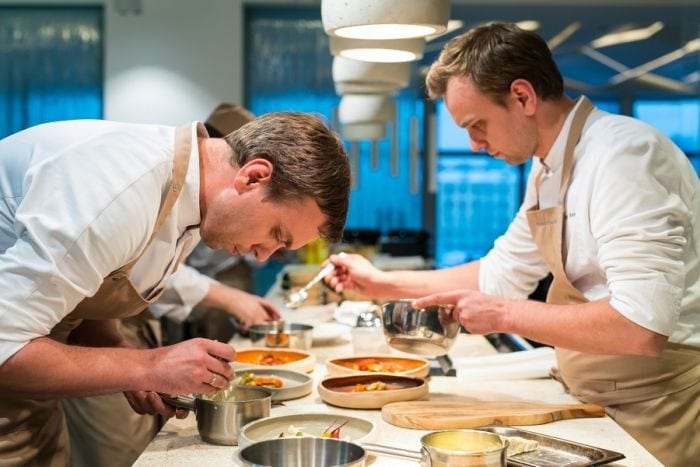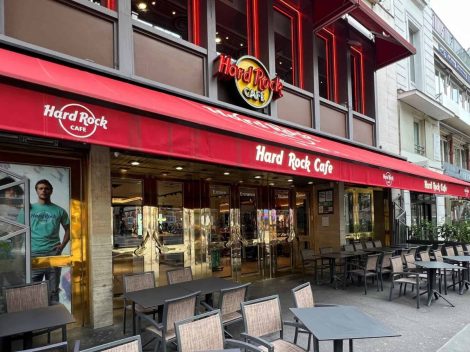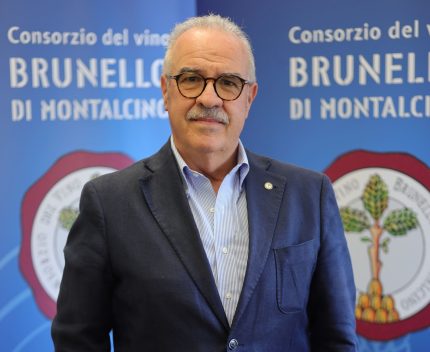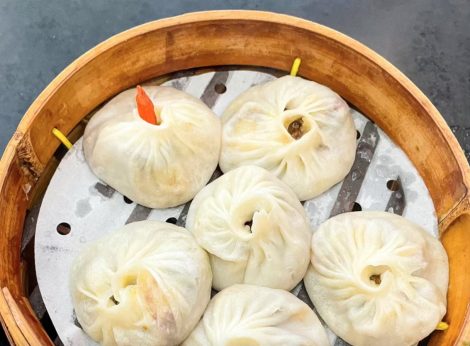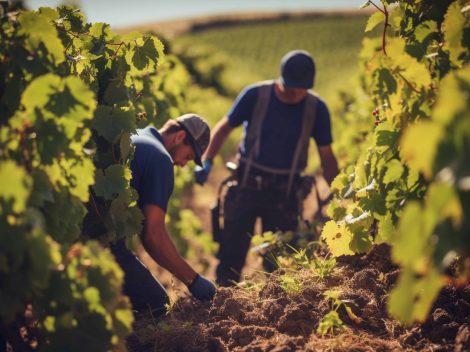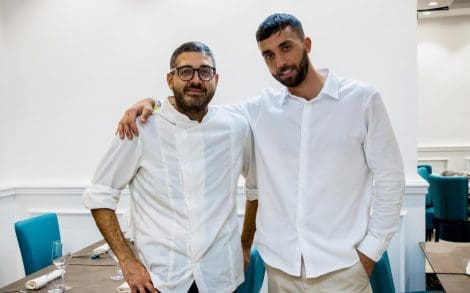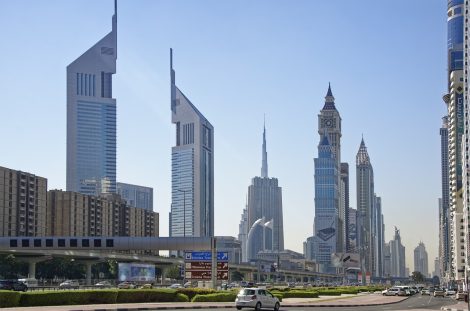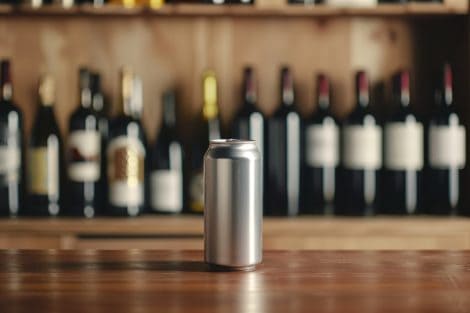Crossing the threshold of Café Pushkin on Moscow's Tverskoy Boulevard is like entering the house of a Russian aristocrat circa 1825: dark wood panelling on the walls, stuccoed ceilings, the dim light of oil lamps. Indeed, this is one of the oldest restaurants in the Russian capital, dating back to… 1999.
Restaurants in the Soviet era
Twenty years aren’t enough to make this into a historical restaurant in a city where, throughout the Soviet era, restaurants were publicly despised as a bourgeois softness, but privately reserved for members of the party and the cultural elite. An example is a Georgian restaurant Aragvi, frequented in the second half of the last century by the best of Soviet society -- a mixture of Eastern Block movie stars, chess champions, cosmonauts and members of the Politburo which was also the favourite gathering of KGB spies and agents.
After the fall of the USSR the restaurant closed, to reopen in 2016, after a restoration that cost 20 million euros, and that has transformed the favourite dining room of the head of Stalin's secret police, Lavrentiy Beria, into a historical attraction, with lots of frescoes on the walls in pure Socialist realist style. The first wave of ambitious restaurants, opened in Moscow in the late 90s, was blatantly sumptuous: born in the wake of the privatization of state resources, their style reflected the sudden and staggering wealth accumulated by some, as well as the desire of the city to stand up to Western capitals. The landmarks of the time are places like Turandot, built from scratch in Baroque style by restaurateur Andrei Dellos (the same as Café Pushkin): 600 employees and more than 500 seats in a huge hall where musicians wearing wigs play classical music. Or the first Russian restaurant to enter in 2011 in the World's 50 Best, the molecular cuisine Varvary, or "barbarians", demonstrating the fact that chef Anatoly Komm did not lack self-irony in ascertaining the perception of Russian gastronomy abroad.
The evolution of Muscovite food scene
But the last few years have marked an evolution in the Muscovite gastronomic scene: no revolution, but rather a snapshot of maturity that does not betray the peculiar spirit of the place. In November 2017 opened Twins Garden, 2.0 version of the lucky Twins restaurant founded by identical twins Ivan and Sergey Berezutskiy in 2014. The new name underlines the fundamental novelty of the project: the two chefs have purchased 50 hectares of land in the Kaluga region - two and a half hours south of Moscow - where they intend to produce between 80% and 90% of the ingredients used in restaurant: «People have begun to understand that the most important thing is the freshness of the food», says Sergey. There is a vegetable garden, but also a heated greenhouse where we grow tomatoes, radishes, cabbage and aromatic herbs; a pond for freshwater crayfish (yes!), a breeding of goats and cows for milk and cheese. The project is carried out in collaboration with specialists of the Russian State University of Agriculture. The model is therefore the farm-to-table one that’s so popular in the West, however, here it’s declined Moscow-style, which is, in sum, the best of the best of everything. An example? The goats are of Nubian breed, wild animals originating from the Arabian Peninsula: they are little domesticated and extremely delicate, and require intense supervision, especially at the time of birthing. For this reason, their lodgings have been equipped with a system of cameras and 24/7 surveillance. A small price to pay, according to the chefs, for the best milk in the world, which in the restaurant menu shines in a simple morning curd paired to an apple sorbet and honey consommé from the Altai mountains.
Chef's garden
Cultivating a garden has long been a habit of great chefs, who love the direct link with ingredients, but also the poetic submission to the logic of nature: Enrico Crippa, awarded with Tre Forchette for his Piazza Duomo restaurant in Alba, likes to say that his biodynamic vegetable garden forces him to humbly rethink dishes based on the availability of a certain ingredient. In the case of Twins Garden, however, the reasoning is almost opposite: the need is to have control. «It is very difficult to regularly supply good vegetables in Russia. Many soils are polluted, and small organic producers can’t often ensure regular supplies and deliveries», explains Sergey. Where the farm can’t go, the twins do: in Moscow they are acknowledged among the first to bring Russian ingredients to an haute cuisine restaurant, a trend that sharply accelerated when the government introduced sanctions on fruit, vegetables, meat and fish imported from the EU, in response to Western sanctions for the war in eastern Ukraine. When Ivan and Sergey embarked on this journey they did not have autarchy in mind, but rather the model invented by René Redzepi's "New Nordic Cuisine" and not only: four times a year the brothers make a trip to a different Russian region to discover the most interesting local products, generally known only in the area: "In this way we found many ingredients, sometimes unknown even to the locals. When we went looking for king crab on the eastern border of the country we discovered that their caviar was being thrown away: we started to use it and today it is also found in other Moscow restaurants",says Sergey. Certainly, in a country of this size it is very difficult to speak of "km0" as we understand it in Italy: crabs from Magadan and Kamchatka take twice as long to get to Moscow compared to the fish of the Adriatic, due to cumbersome logistics. So, farm-to-table, we said.
Twins Garden
In addition to the name, the Twins Garden declines the theme of nature remaining firmly within the standard of the great Moscow restaurant: here we do not find excesses, but luxury is seen only in transparency. The architecture is inspired by Russian constructivism and the design of the restaurant has an eco-minimalist style reminiscent of the open spaces with ample use of rough surfaces and textures like rocks, walls that shine replicating moisture, and small pots of moss that act as table centrepieces. There is, in addition, another small titbit: one of the private rooms of the restaurant houses a miniature hanging garden, with small vases in aeroponic cultivation hanging from the ceiling. Guests can plant a seed that once blossomed will be transferred to the property’s farmland: the harvest will go directly to the diner, a sort of delayed dinner favour. Another room is devoted to test kitchen, where the stainless steel of the kitchen appliances futuristic is reflected on the onyx slab counter. Here the twins can experiment in complete freedom with new dishes and ideas, in front of an ultra-selected audience: there is only seating for five. The satisfaction with which they describe the space speaks of a dream come true: two out of a thousand in their generation have the means to stitch this restaurant exactly on the measure of their ambitions.
The menu
The sense for the theatre of Muscovite gastronomy returns in the composition of the tasting menu, built on the theme of "twins": the dishes are based on two ingredients that resemble each other in appearance, but that are different and ultimately complementary - like the Berezutskiy, of course. For example, on the menu is horsehair crab - so named for the "fuzz", which often covers the carapace - served in combination with armillaria mushrooms; or veal and walnut brains, perhaps the most suggestive in identifying two almost perfectly identical elements. The idea possesses indisputable charm, but it places formal constraints that are so restrictive that they become reminiscent of those forms of poetry in which only one vowel is allowed, so the risk is to turn the whole journey into a formula. Yet the ability to create a feeling of familiarity and surprise – as in the case of steamed sturgeon served with a side dish of "fusilli" (actually dried fish bone marrow shaped like a helix) testifies to a real talent, even more so in the face of a bill that is slightly above 40 euro per person. It’s difficult to justify in the face of the cost of the entire project, which is clearly worth tens of millions of dollars. When questioned on this, the communication team hesitates, offering only thus statement: "The investment is difficult to estimate because the farm is still under construction, so any exact sum would not be entirely correct".Surely, the aim is not just to attract a Russian clientele: the championship in which Twins Garden wants to compete is that of the great international restaurants.
It seems that the winning way to go will be to take inspiration from themes - respect for the seasons, local ingredients, self-production, novel national cuisine - and then throw in the gears to overtake thanks to almost unlimited financial resources. A new race for space has begun, this time gastronomic.
by Sara Porro
photography by Alberto Blasetti

